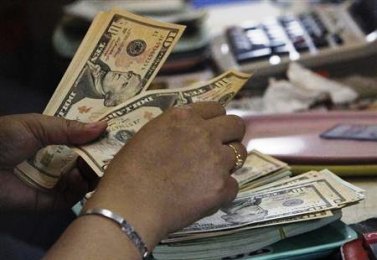Sudanese pound weakens further against US dollar
January 15, 2014 (KHARTOUM) – The US dollar inched higher in the black market relative to the Sudanese pound (SDG) despite assurances by the central bank that it has enough Forex reserves to support the local currency.

Juba pays Khartoum a fee for every barrel of oil it exports through the pipelines which represent the only outlet for the landlocked state to export its crude to international markets.
The secession of the oil-rich south, denied Khartoum access to 75% of oil reserves that existed when the country was united. This has created a fiscal shock as a result of curtailment in national income and also increased prices of basic commodities that are mostly imported using shrinking Forex reserves.
This week central bank sources told the pro-government al-Rayaam newspaper that they are now in a comfortable position to combat the shortage in hard currency that has plagued the market since the country’s partition.
The sources underscored that they started receiving oil transit fees from Juba since three weeks ago totaling millions of dollars.
They stressed that the recent events in South Sudan did not interrupt the transfer of dues owed to Khartoum and added that oil production increases helped boost service fees.
Oil production in South Sudan was partially disrupted after forces loyal to former vice-president Riek Machar took control of Unity state, which contained some of the wells.
Last week, officials in Khartoum and Juba affirmed that the flow of crude from Adar Yeil’s oil field in Upper Nile state is at levels, normal adding that production had increased from 165,000 barrels per day (bpd) to 200,000.
However, Reuters quoted oil industry sources as saying that South Sudan reduced its exports and revised its loading programme while deferring some cargoes.
(ST)
